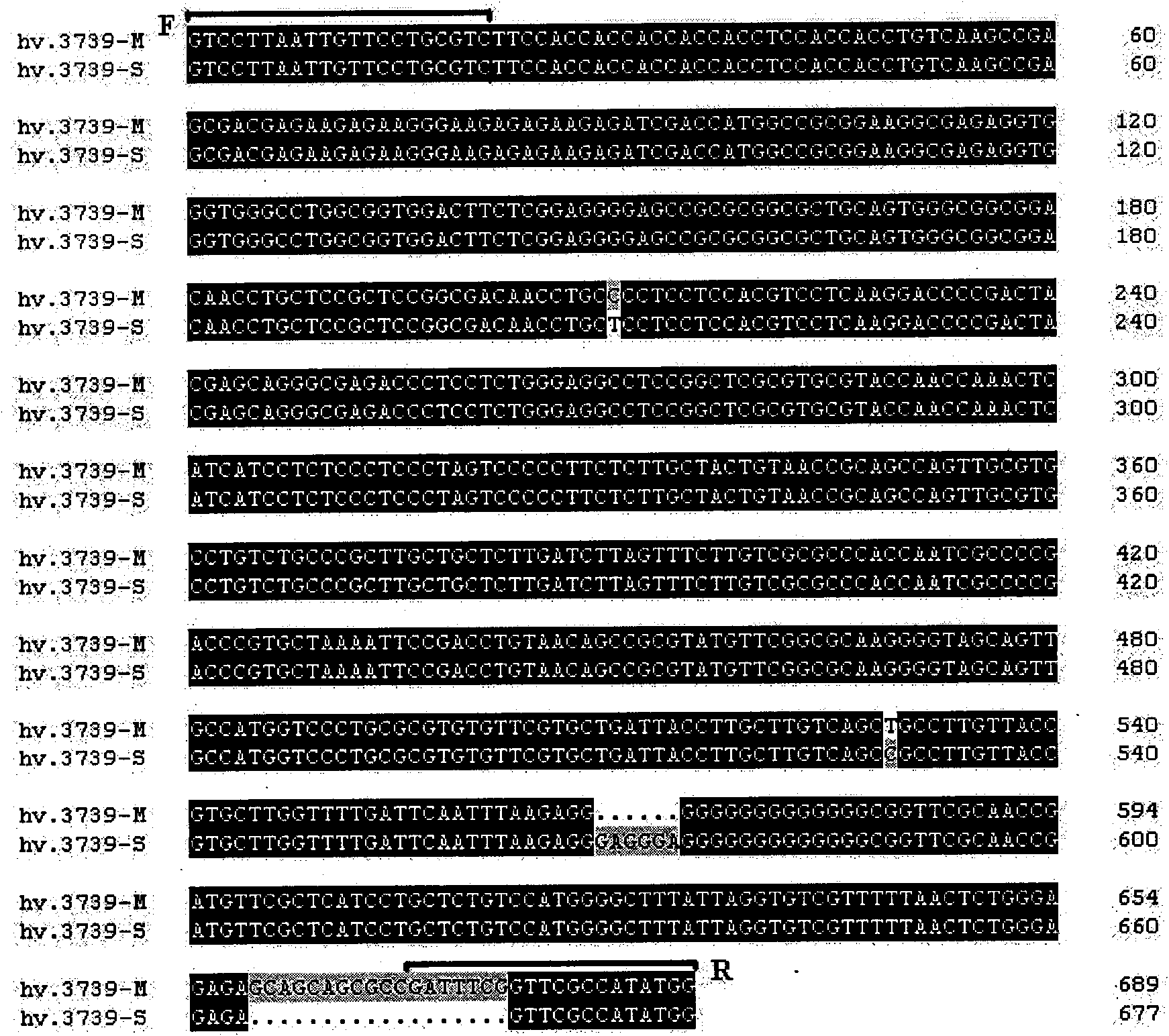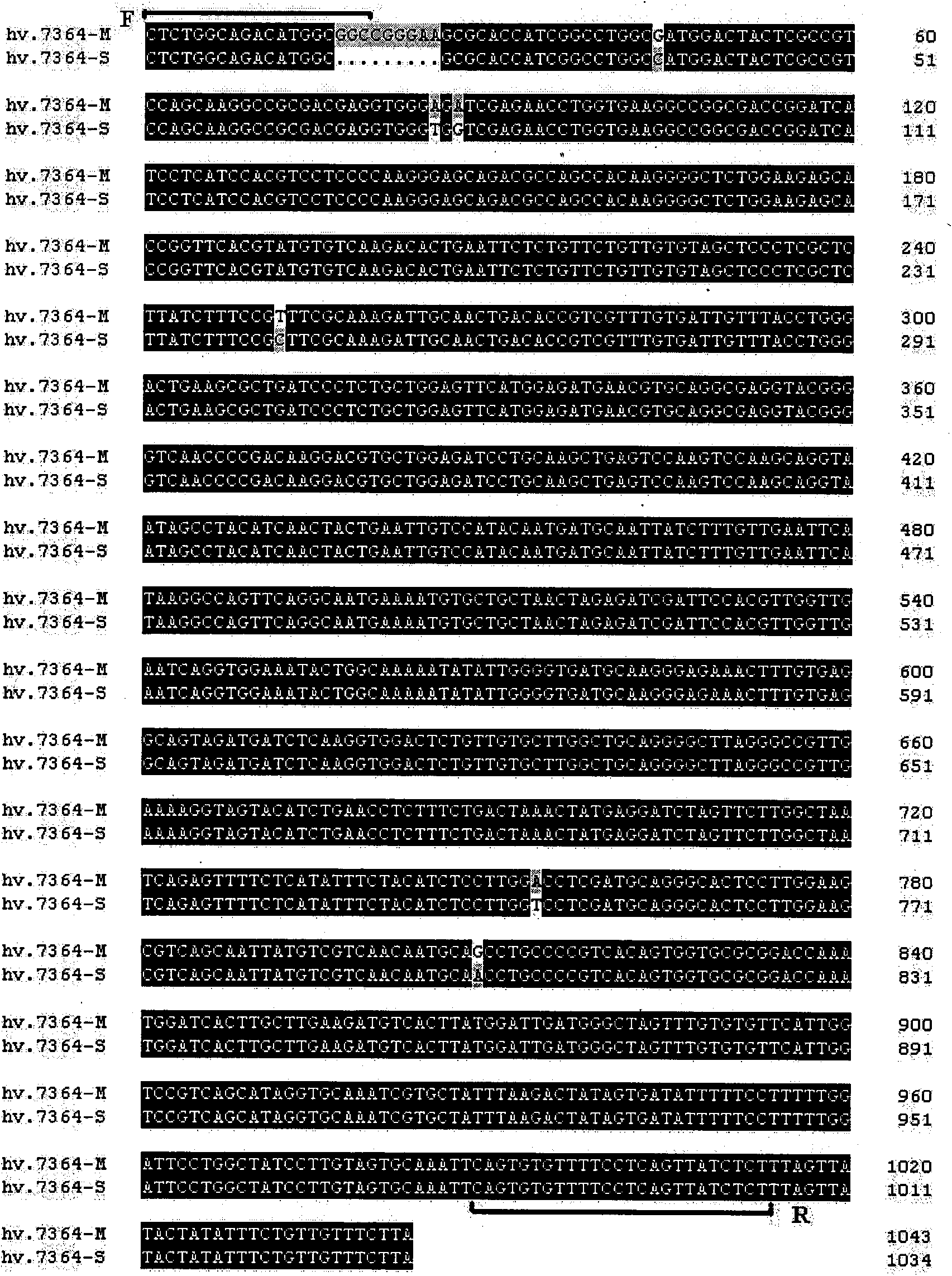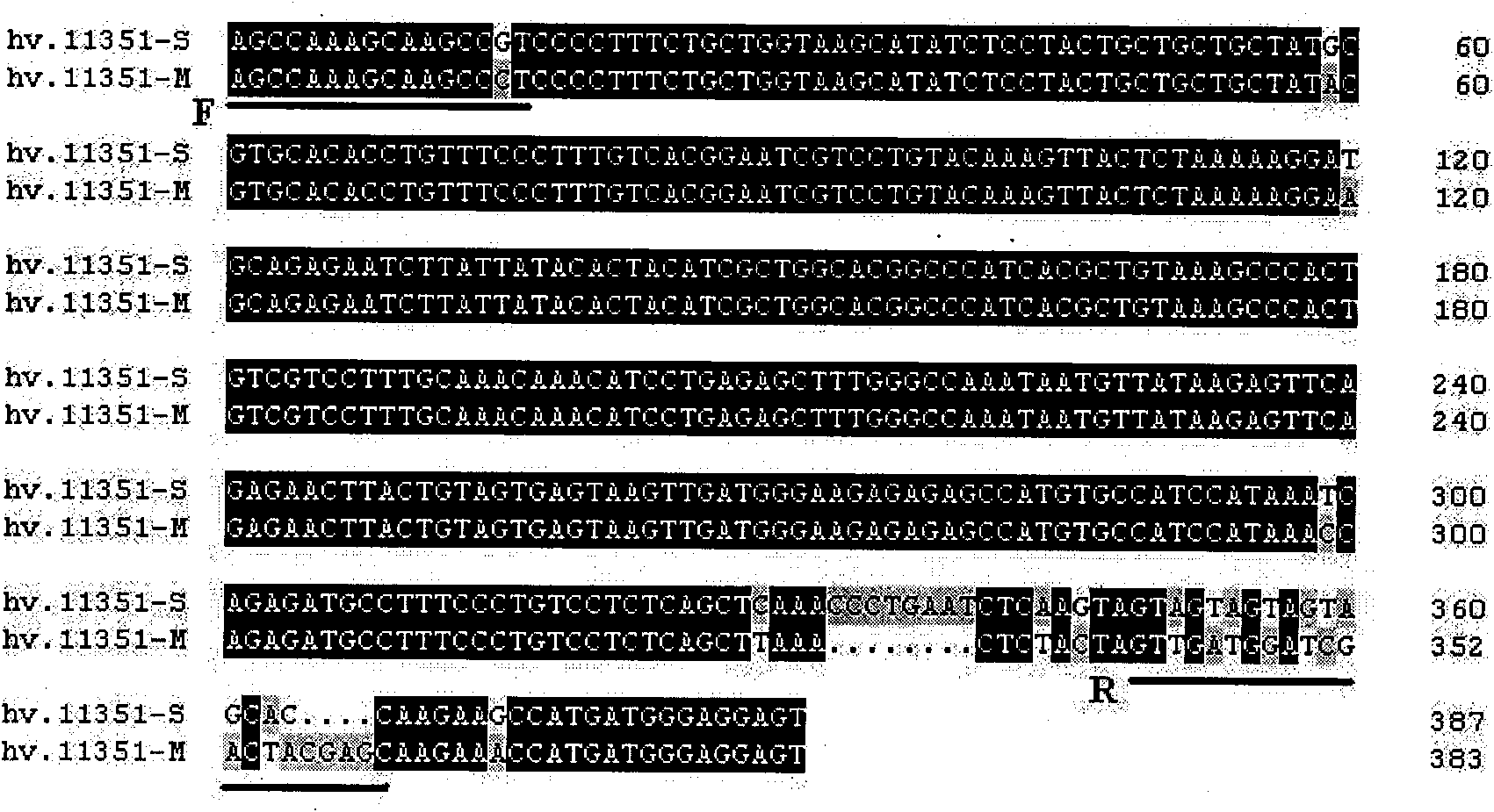Development of wide stress protein family gene specific molecular marker and application thereof
A protein family and molecular marker technology, applied in the field of biological genetic engineering
- Summary
- Abstract
- Description
- Claims
- Application Information
AI Technical Summary
Problems solved by technology
Method used
Image
Examples
Embodiment 1
[0070] 1. Gene sequence:
[0071] Firstly, using the nucleic acid sequences of the hv.3739 extensive stress protein genes of the barley varieties Steptoe and Morex obtained by the inventor's clone, the results of comparing the nucleic acid sequences with the software DNAMAN 5.11 are as attached figure 1 As shown, the sequence comparison diagram was obtained.
[0072] 2. Genomic DNA extraction:
[0073] Genomic DNA of barley cultivars Morex and Steptoe and their DH populations were extracted by SDS method.
[0074] The steps are:
[0075] (1) Take a small amount of fresh young leaves, grind them into fine powder with liquid nitrogen, put them into a 2.0ml centrifuge tube, add SDS extract (100mM Tris-Cl pH5.8, 100mMNaCl, 2% SDS) preheated to 65°C 1ml mixed;
[0076] (2) 65 ℃ water bath for 50 minutes, during which gently shake to mix. After cooling to room temperature, add an equal volume of chloroform:isoamyl alcohol (24:1), mix gently until the supernatant becomes milky, ...
Embodiment 2
[0109] 1. Gene sequence:
[0110] Firstly, using the nucleic acid sequences of the hv.7364 extensive stress protein genes of the barley varieties Steptoe and Morex obtained by the inventor's clone, the results of comparing the nucleic acid sequences through the software DNAMAN 5.11 are shown in the appendix figure 2 As shown, the sequence comparison diagram was obtained.
[0111] 2, with the second step of embodiment 1.
[0112] 3. Design primers based on the differences in known related sequences:
[0113] Compare the partial DNA sequences of Morex and Steptoe of the hv.3739 gene by DNAMAN5.11 software, and then use the DNA sequence of the hv.7364 gene of Morex to insert the base sequence GGCCGGGAA region more than the sequence of Steptoe, and design primers:
[0114] F: 5'-CTCTGGCAGACATGGCAGC-3';
[0115] R: 5'-AGAGATAACTGAGGAAAACACACTG-3'.
[0116] 4. PCR amplification:
[0117] Using the DNA of Steptoe and Morex as a template, the primers designed in step 3 were used...
Embodiment 3
[0138] 1. Gene sequence:
[0139] Firstly, using the nucleic acid sequences of the hv.23267 extensive stress protein genes of the barley varieties Steptoe and Morex obtained by the inventor's clone, the results of comparing the nucleic acid sequences through the software DNAMAN 5.11 are shown in the appendix image 3 As shown, the sequence comparison diagram was obtained.
[0140] 2, with the second step of embodiment 1.
[0141] 3. Design primers based on the differences in known related sequences:
[0142] Compare the partial DNA sequences of Morex and Steptoe of the hv.23267 gene by DNAMAN5.11 software, and then use the base sequence AACT region missing from the DNA sequence of the hv.23267 gene of Morex than the sequence of Steptoe to design primers:
[0143] F: 5'-CTTAACCAACTAACCAAGGAGAT-3';
[0144] R: 5'-CATGAGTACAGTAGATGGTTGGG-3'.
[0145] 4. PCR amplification:
[0146] Using the DNA of Steptoe and Morex as a template, the primers designed in step 3 were used for ...
PUM
 Login to View More
Login to View More Abstract
Description
Claims
Application Information
 Login to View More
Login to View More - R&D
- Intellectual Property
- Life Sciences
- Materials
- Tech Scout
- Unparalleled Data Quality
- Higher Quality Content
- 60% Fewer Hallucinations
Browse by: Latest US Patents, China's latest patents, Technical Efficacy Thesaurus, Application Domain, Technology Topic, Popular Technical Reports.
© 2025 PatSnap. All rights reserved.Legal|Privacy policy|Modern Slavery Act Transparency Statement|Sitemap|About US| Contact US: help@patsnap.com



